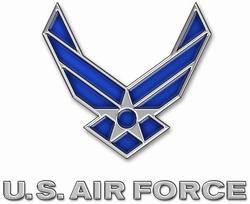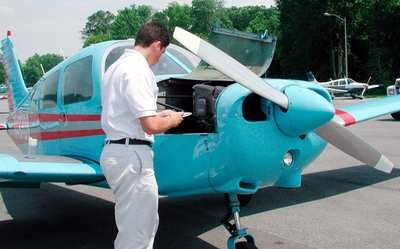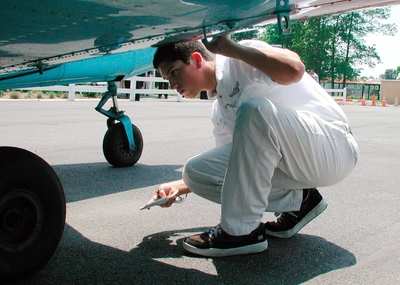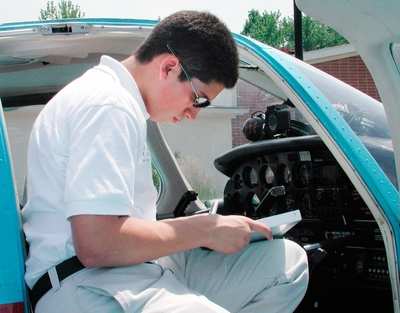 The
Air Force’s Flight Awareness Summer Training
orientation program encourages ROTC cadets in minority-based
college and university programs to investigate careers in aviation.
Twenty-two cadets enrolled in the three-week program at Delaware
State University attended the FAST forum at Dover Air Force Base,
Del., recently. The orientation offers 20 hours of flight
instruction that can be applied in the university or on active
duty.
The
Air Force’s Flight Awareness Summer Training
orientation program encourages ROTC cadets in minority-based
college and university programs to investigate careers in aviation.
Twenty-two cadets enrolled in the three-week program at Delaware
State University attended the FAST forum at Dover Air Force Base,
Del., recently. The orientation offers 20 hours of flight
instruction that can be applied in the university or on active
duty.
The program traces it roots back to 1996, when the Air Force
reviewed pilot demographics and found that of the 15,300 pilots on
active duty, less than 2 percent were black and about 1.5 percent
were Hispanic-American.
As a result, the Air Force established and funded the
orientation program at the university to assist with in
recruitment, selection and cadet travel from ROTC detachments, said
Dr. Alain Hunter, program manager assigned to the secretary of the
Air Force’s office of small and disadvantaged business
utilization.

The office staff conceived the program after visiting more than
50 percent of the nation’s historically black colleges and
universities and 20 percent of other minority institutions. Hunter
emphasized that the program targets minority institutions, but is
not race-based.
The Air Force program supports the university’s
airway-science program that produces minority pilots. The
university owns eight aircraft and provides program instruction and
management with its own faculty and staff.
At first, a 10-week program was designed to provide Federal
Aviation Administration pilot license flight training and aerospace
orientation to senior cadets. Twenty-five cadets completed the
program, and 20 serve on active duty as pilots or in related
vocations in the flight-training pipeline.
In 1998, a three-week program replaced it. Ninety-six cadets
have completed the program. “This program is awesome,”
said Derrick A. Cash, a business administration student at
Morehouse College in Atlanta. “This is an excellent
opportunity to pursue a career in aviation.”

Manuel R. Ochoa, a cadet from New Mexico State University, said
that the exposure to actual aircraft is a big plus. “Most
people have to wait until after college before they get into an
airplane,” he said. “They spend all that time wishing
to be a pilot, and then get into an airplane, and sometimes they
don’t like it. For me, I’m getting (to fly in) my first
year in college.”
The orientation program includes an informal meeting with
installation representatives, typically commanders and other
officers, to talk to cadets about flight, Hunter said.
“I try to get them excited about flying,” Hunter
said. Ideally, the program will pay off in the form of new officer
recruits down the road, Hunter said.

“Hopefully, they’ll recall this program when the
time comes to choose a career,” he said. “… We
hope they choose to stay in aviation.” If the recent
class’ enthusiasm about the program is any indication, those
hopes may one day become a reality. Monica Sowell, a computer
science student at North Carolina A&T State University, said
the diversity of students in the FAST program makes it a positive
experience.
“We have Hispanics, blacks and whites, and we all get
along well,” she said. “I think this program is a
wonderful initiative.” The program has Sowell thinking of
joining a very exclusive minority -- black female pilots.
“There aren’t too many female pilots in the Air
Force, let alone African-American female pilots,” she said.
“I like being different, so I figured this was a good way to
do it. Without a doubt, I see myself flying in the Air Force one
day.” [ANN Thanks Tech. Sgt. David A. Jablonski, Air
Force Print News]
 NTSB Prelim: Cirrus Design Corp SR20
NTSB Prelim: Cirrus Design Corp SR20 ANN's Daily Aero-Linx (11.30.25)
ANN's Daily Aero-Linx (11.30.25) ANN's Daily Aero-Term (11.30.25): Wind Shear Escape
ANN's Daily Aero-Term (11.30.25): Wind Shear Escape Aero-News: Quote of the Day (11.30.25)
Aero-News: Quote of the Day (11.30.25) Airborne 11.26.25: Bonanza-Baron Fini, Archer v LA NIMBYs, Gogo Loses$$$
Airborne 11.26.25: Bonanza-Baron Fini, Archer v LA NIMBYs, Gogo Loses$$$






